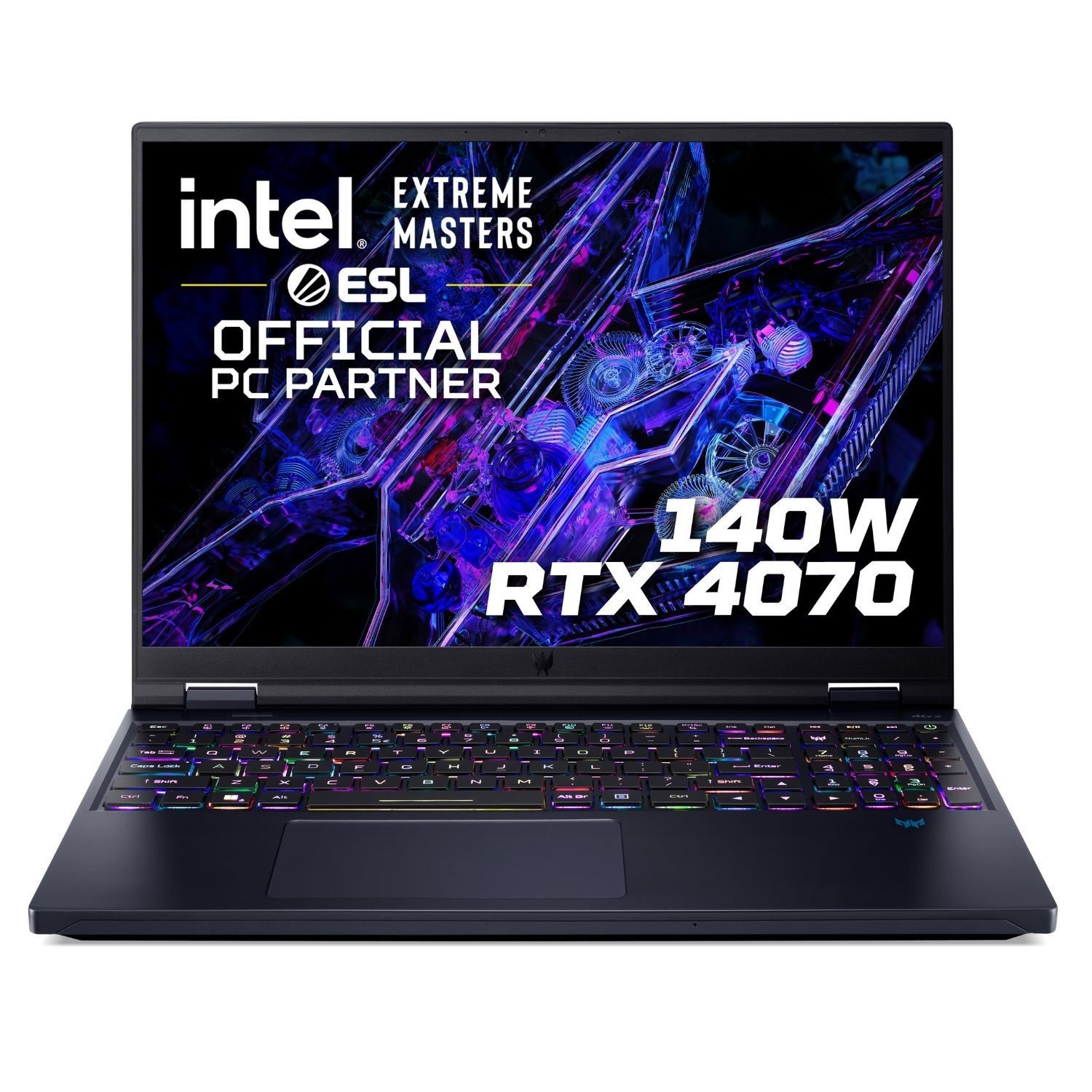
Greetings, Civ fans! Since launch, the team at Firaxis Games has been working quickly to address key areas of Civilization VII that we’ve prioritized and identified with the community’s feedback and our own teams. Today, we wanted to provide a high-level overview of what you can expect in the next updates for Civilization VII.
Next Update Coming March 4
The next update for Civilization VII, Update 1.1.0, is coming on March 4, 2025, and will be deployed across PC & console. Cross-play between PC and consoles will be re-enabled with the deployment of this update. Please note: Update 1.1.0 release timing may differ on Nintendo Switch.
Update 1.1.0 includes a number of updates based on community suggestions and feedback. A full list of update notes will be shared on release, but some notable callouts of what you can expect include the following:
- New Natural Wonder to discover: Bermuda Triangle (free to all players)
- Additional UI adjustments, polish, and addressing of reported issues
- Significant changes to the Modern Age’s Cultural Legacy Path and Victory; AI leaders will also be better at completing a Cultural Victory (so expect fewer Explorer Unit stacks!)
- Now able to convert Holy Cities in the Exploration Age. Note that when players create their own Missionary Units, they will always follow the player’s chosen Religion
- Naval Units will be able to disperse Coastal Independent Powers
- Balance pass on several Mementos
- Refinements to the Army Unpacking action
- Addressing reported issues with multiplayer and adding friends with a 2K Account
- For console players: all prior updates from Update 1.0.1 Patches 1, 2, and 3 will be implemented, in addition to the items noted above
Although our first in-game Event, Natural Wonder Battle, was originally planned for Update 1.1.0 on March 4, events are now being postponed to a later update to allow us more time to prioritize quality-of-life improvements for players worldwide. We’ll share more details about the first in-game event once we’re ready.
Also going live with Update 1.1.0 is the first half of the paid Crossroads of the World Collection, which is included in both the Deluxe Edition and Founders Edition of Civilization VII. Players who own either of those editions, or have purchased the Crossroads of the World Collection separately, will receive this content automatically with Update 1.1.0.
- Crossroads of the World Collection – Part 1: The first half of the paid Crossroads of the World Collection includes the new leader Ada Lovelace, the new civs Great Britain (Modern Age) and Carthage (Antiquity Age), and the Natural Wonder Pack including four new Natural Wonders: Machapuchare, Mount Fuji, Vihren, and Vinicunca.
Update 1.1.1 Coming March 25
The March 4 update is the first of many future major releases coming to Civilization VII. The next major update after that, Update 1.1.1, is slated for March 25 (subject to change). Here’s a sneak peek at some of what’s planned for that update:
- Additional UI improvements and refinements; specifics will be shared later with the Update 1.1.1 Notes
- Note: Ongoing improvements to the User Interface continues to be a top priority for the development team. The updates being introduced on March 25 are just one part of a much larger plan that aims to improve the UI over the next several months.
- Scouting and Settling improvements for AI, including less aggressive “forward” settling by AI
- Adding Quick Move functionality
- Adding the ability to customize the names of Commanders and Cities
- Renaming the existing maps to be “Start Position: Balanced,” which will be the default Start Position setting for multiplayer games
- Adding a new Start Position of “Standard,” where the landforms on maps are less predictable, closer to how map generation works in Civ VI
- Adding an optional Restart button that rerolls the player’s map generation now that these less predictable start positions are possible
- New Natural Wonder: Mount Everest (free to all players)
Update 1.1.1 will also include the second half of the paid Crossroads of the World Collection, which is included in both the Deluxe Edition and Founders Edition of Civilization VII. This includes a new leader, Simón Bolívar, and two new Civilizations with Bulgaria (Exploration Age) and Nepal (Modern Age).
Looking Ahead
Beyond March, we have several community-requested items on our list that are high priorities for the team. Some examples of these include:
- Ongoing UI improvements
- Adding a “One More Turn” button that will let you continue playing past the end of the Modern Age
- Implementing Auto-Explore
- New map sizes (all platforms except Nintendo Switch)
- New Resource types and adjustments to map resource allocation
- Teams support in multiplayer
- Hot Seat local multiplayer
- Research Queuing
- Mod tools and Steam Workshop support
- Additional game setup customization options
- And more!
We’re in the process of scoping the work necessary to bring these priorities to the game as soon as we can. Some of these will be delivered as early as April (subject to change), though many will take longer to develop, test, and deploy. As always in development, plans can change and we’ll have more details to share here in the weeks and months ahead as plans solidify. We appreciate your continued patience in the meantime!
Where Can I Share Feedback?
If you’re looking to share feedback on Civilization VII, want to stay up-to-date, or are just looking for a place to talk with other Civ players, check out the Steam Discussion forums and our official Discord channel! For any bugs and issues, you can check if it’s an issue already on our radar or submit a ticket through our support portal (select Civ VII in dropdown). As always, thanks for being the best fans in gaming!

 TSMC (TWSE: 2330, NYSE: TSM) today announced its intention to expand its investment in advanced semiconductor manufacturing in the United States by an additional $100 billion. Building on the company’s ongoing $65 billion investment in its advanced semiconductor manufacturing operations in Phoenix, Arizona, TSMC’s total investment in the U.S. is expected to reach US$165 billion. The expansion includes plans for three new fabrication plants, two advanced packaging facilities and a major R&D team center, solidifying this project as the largest single foreign direct investment in U.S. history.
TSMC (TWSE: 2330, NYSE: TSM) today announced its intention to expand its investment in advanced semiconductor manufacturing in the United States by an additional $100 billion. Building on the company’s ongoing $65 billion investment in its advanced semiconductor manufacturing operations in Phoenix, Arizona, TSMC’s total investment in the U.S. is expected to reach US$165 billion. The expansion includes plans for three new fabrication plants, two advanced packaging facilities and a major R&D team center, solidifying this project as the largest single foreign direct investment in U.S. history.


 Welcome to the month of March and a week when almost every single new game launches on a Thursday. This week’s major release is a new 5v5 FPS shooter set in a Sci-Fi world. This is followed by alien planet colony management, a spot of museum curation, working as a car mechanic, doing battle with your best buddy in multiple imaginary worlds, with the week finally ending with some more co-op action, but puppet sized. We have four more games included at the end, but that’s only a few of the games launching this Thursday.
Welcome to the month of March and a week when almost every single new game launches on a Thursday. This week’s major release is a new 5v5 FPS shooter set in a Sci-Fi world. This is followed by alien planet colony management, a spot of museum curation, working as a car mechanic, doing battle with your best buddy in multiple imaginary worlds, with the week finally ending with some more co-op action, but puppet sized. We have four more games included at the end, but that’s only a few of the games launching this Thursday.
 ‘); $(‘.tpu-fancybox-wrap’).css(‘maxWidth’, maxWidth);*/ instance.$refs.stage.on(‘transitionend’, function() { updateButtonPos(instance); }); }, onUpdate: updateButtonPos, afterShow: function(instance, slide) { updateButtonPos(instance); instance.$refs.inner.find(‘.fancybox-tpu-nav’).show(); }, beforeClose: function(instance, slide) { instance.$refs.inner.find(‘.fancybox-tpu-nav’).hide(); }, afterClose: function(instance, slide) { $(‘.tpu-fancybox-wrap’).contents().unwrap(); $(‘body’).removeClass(‘tpu-fancybox-body-wrap’) }, baseTpl: ‘
‘); $(‘.tpu-fancybox-wrap’).css(‘maxWidth’, maxWidth);*/ instance.$refs.stage.on(‘transitionend’, function() { updateButtonPos(instance); }); }, onUpdate: updateButtonPos, afterShow: function(instance, slide) { updateButtonPos(instance); instance.$refs.inner.find(‘.fancybox-tpu-nav’).show(); }, beforeClose: function(instance, slide) { instance.$refs.inner.find(‘.fancybox-tpu-nav’).hide(); }, afterClose: function(instance, slide) { $(‘.tpu-fancybox-wrap’).contents().unwrap(); $(‘body’).removeClass(‘tpu-fancybox-body-wrap’) }, baseTpl: ‘



 ‘); $(‘.tpu-fancybox-wrap’).css(‘maxWidth’, maxWidth);*/ instance.$refs.stage.on(‘transitionend’, function() { updateButtonPos(instance); }); }, onUpdate: updateButtonPos, afterShow: function(instance, slide) { updateButtonPos(instance); instance.$refs.inner.find(‘.fancybox-tpu-nav’).show(); }, beforeClose: function(instance, slide) { instance.$refs.inner.find(‘.fancybox-tpu-nav’).hide(); }, afterClose: function(instance, slide) { $(‘.tpu-fancybox-wrap’).contents().unwrap(); $(‘body’).removeClass(‘tpu-fancybox-body-wrap’) }, baseTpl: ‘
‘); $(‘.tpu-fancybox-wrap’).css(‘maxWidth’, maxWidth);*/ instance.$refs.stage.on(‘transitionend’, function() { updateButtonPos(instance); }); }, onUpdate: updateButtonPos, afterShow: function(instance, slide) { updateButtonPos(instance); instance.$refs.inner.find(‘.fancybox-tpu-nav’).show(); }, beforeClose: function(instance, slide) { instance.$refs.inner.find(‘.fancybox-tpu-nav’).hide(); }, afterClose: function(instance, slide) { $(‘.tpu-fancybox-wrap’).contents().unwrap(); $(‘body’).removeClass(‘tpu-fancybox-body-wrap’) }, baseTpl: ‘

 Greetings, Civ fans! Since launch, the team at Firaxis Games has been working quickly to address key areas of Civilization VII that we’ve prioritized and identified with the community’s feedback and our own teams. Today, we wanted to provide a high-level overview of what you can expect in the next updates for Civilization VII.
Greetings, Civ fans! Since launch, the team at Firaxis Games has been working quickly to address key areas of Civilization VII that we’ve prioritized and identified with the community’s feedback and our own teams. Today, we wanted to provide a high-level overview of what you can expect in the next updates for Civilization VII.

 ‘); $(‘.tpu-fancybox-wrap’).css(‘maxWidth’, maxWidth);*/ instance.$refs.stage.on(‘transitionend’, function() { updateButtonPos(instance); }); }, onUpdate: updateButtonPos, afterShow: function(instance, slide) { updateButtonPos(instance); instance.$refs.inner.find(‘.fancybox-tpu-nav’).show(); }, beforeClose: function(instance, slide) { instance.$refs.inner.find(‘.fancybox-tpu-nav’).hide(); }, afterClose: function(instance, slide) { $(‘.tpu-fancybox-wrap’).contents().unwrap(); $(‘body’).removeClass(‘tpu-fancybox-body-wrap’) }, baseTpl: ‘
‘); $(‘.tpu-fancybox-wrap’).css(‘maxWidth’, maxWidth);*/ instance.$refs.stage.on(‘transitionend’, function() { updateButtonPos(instance); }); }, onUpdate: updateButtonPos, afterShow: function(instance, slide) { updateButtonPos(instance); instance.$refs.inner.find(‘.fancybox-tpu-nav’).show(); }, beforeClose: function(instance, slide) { instance.$refs.inner.find(‘.fancybox-tpu-nav’).hide(); }, afterClose: function(instance, slide) { $(‘.tpu-fancybox-wrap’).contents().unwrap(); $(‘body’).removeClass(‘tpu-fancybox-body-wrap’) }, baseTpl: ‘

 Earlier today, the AMD Rewards website was updated with a new marketing promotion—standard edition digital copies of Capcom’s
Earlier today, the AMD Rewards website was updated with a new marketing promotion—standard edition digital copies of Capcom’s 
 ‘); $(‘.tpu-fancybox-wrap’).css(‘maxWidth’, maxWidth);*/ instance.$refs.stage.on(‘transitionend’, function() { updateButtonPos(instance); }); }, onUpdate: updateButtonPos, afterShow: function(instance, slide) { updateButtonPos(instance); instance.$refs.inner.find(‘.fancybox-tpu-nav’).show(); }, beforeClose: function(instance, slide) { instance.$refs.inner.find(‘.fancybox-tpu-nav’).hide(); }, afterClose: function(instance, slide) { $(‘.tpu-fancybox-wrap’).contents().unwrap(); $(‘body’).removeClass(‘tpu-fancybox-body-wrap’) }, baseTpl: ‘
‘); $(‘.tpu-fancybox-wrap’).css(‘maxWidth’, maxWidth);*/ instance.$refs.stage.on(‘transitionend’, function() { updateButtonPos(instance); }); }, onUpdate: updateButtonPos, afterShow: function(instance, slide) { updateButtonPos(instance); instance.$refs.inner.find(‘.fancybox-tpu-nav’).show(); }, beforeClose: function(instance, slide) { instance.$refs.inner.find(‘.fancybox-tpu-nav’).hide(); }, afterClose: function(instance, slide) { $(‘.tpu-fancybox-wrap’).contents().unwrap(); $(‘body’).removeClass(‘tpu-fancybox-body-wrap’) }, baseTpl: ‘

 Welcome to the last week of February and this week we have a massive AAA release from a popular Capcom franchise that involves a lot of monsters in the wild. The rest of this week is a lot more low-key, with a rhythm platformer, a 2D scroller action ninja game, a co-op horror game, a retro collection which includes no less than 14 games and finally some greens and bunkers.
Welcome to the last week of February and this week we have a massive AAA release from a popular Capcom franchise that involves a lot of monsters in the wild. The rest of this week is a lot more low-key, with a rhythm platformer, a 2D scroller action ninja game, a co-op horror game, a retro collection which includes no less than 14 games and finally some greens and bunkers.
 ‘); $(‘.tpu-fancybox-wrap’).css(‘maxWidth’, maxWidth);*/ instance.$refs.stage.on(‘transitionend’, function() { updateButtonPos(instance); }); }, onUpdate: updateButtonPos, afterShow: function(instance, slide) { updateButtonPos(instance); instance.$refs.inner.find(‘.fancybox-tpu-nav’).show(); }, beforeClose: function(instance, slide) { instance.$refs.inner.find(‘.fancybox-tpu-nav’).hide(); }, afterClose: function(instance, slide) { $(‘.tpu-fancybox-wrap’).contents().unwrap(); $(‘body’).removeClass(‘tpu-fancybox-body-wrap’) }, baseTpl: ‘
‘); $(‘.tpu-fancybox-wrap’).css(‘maxWidth’, maxWidth);*/ instance.$refs.stage.on(‘transitionend’, function() { updateButtonPos(instance); }); }, onUpdate: updateButtonPos, afterShow: function(instance, slide) { updateButtonPos(instance); instance.$refs.inner.find(‘.fancybox-tpu-nav’).show(); }, beforeClose: function(instance, slide) { instance.$refs.inner.find(‘.fancybox-tpu-nav’).hide(); }, afterClose: function(instance, slide) { $(‘.tpu-fancybox-wrap’).contents().unwrap(); $(‘body’).removeClass(‘tpu-fancybox-body-wrap’) }, baseTpl: ‘
